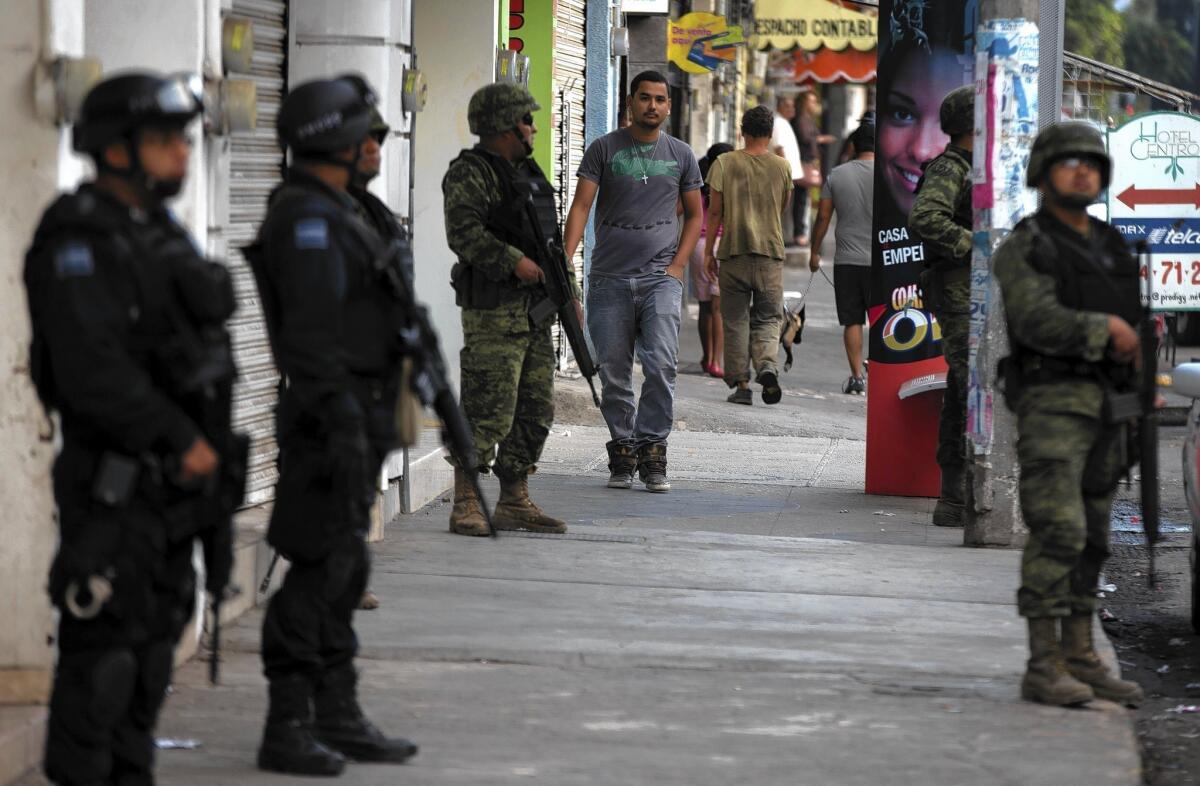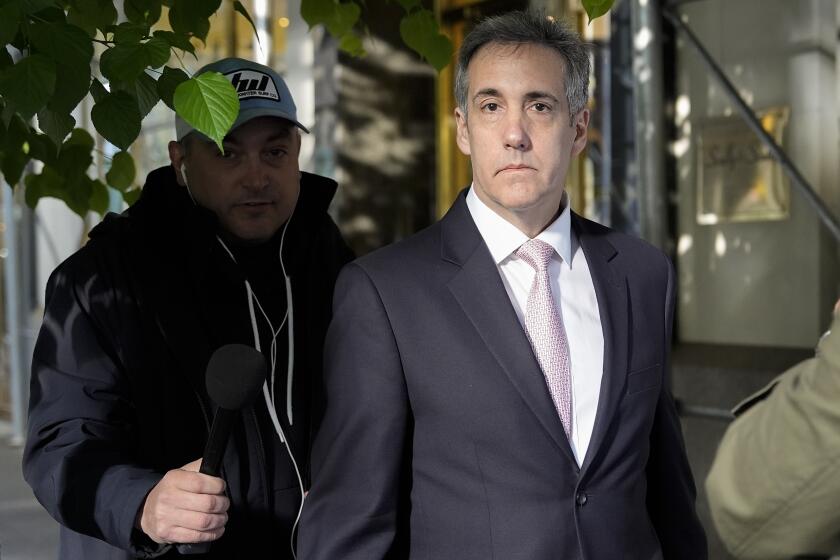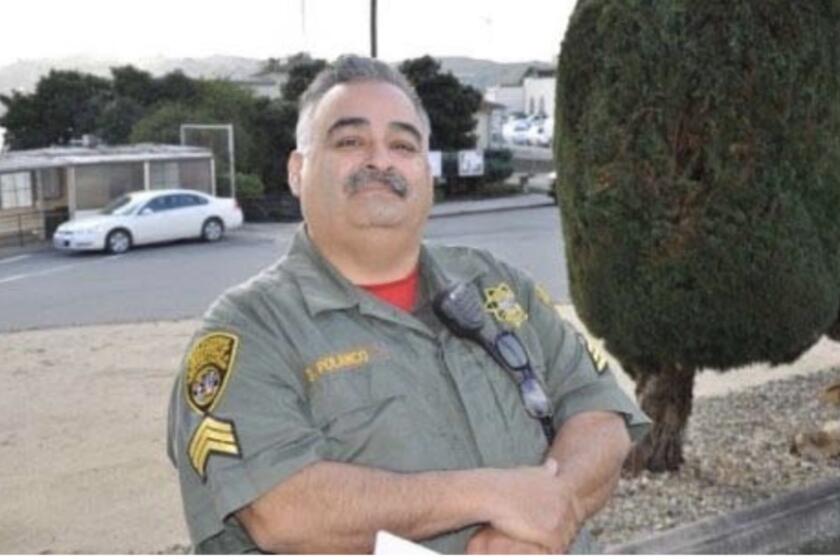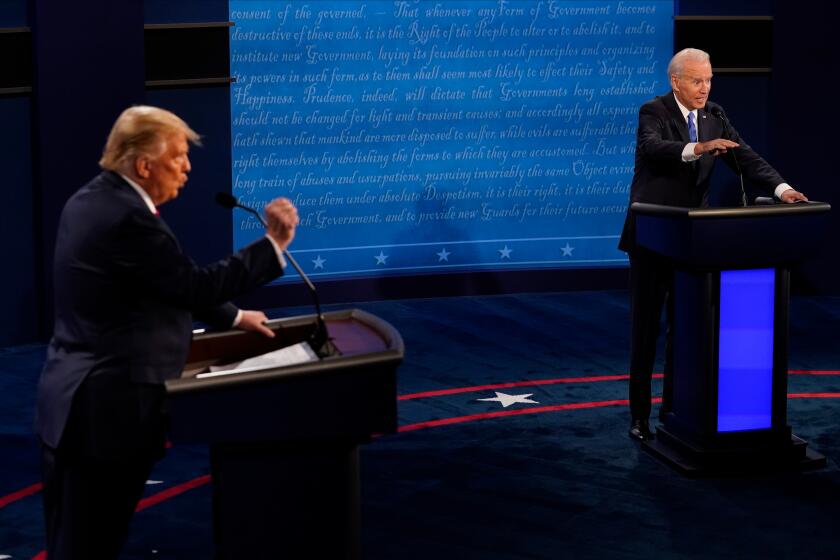Some Mexico vigilantes cooperating with government forces

OUTSIDE NUEVA ITALIA, Mexico — The men came down from the highlands to the north of here. They were armed with shotguns, shod in sneakers and dusty boots. Their aim was to rid the Michoacan city of Nueva Italia of the dreaded Knights Templar drug cartel.
They rolled into town Sunday morning, disarmed the local police, and declared themselves in control, joined by scores of men from other towns who also consider themselves part of Michoacan’s vigilante “self-defense” movement. Their next goal was to invade the larger city of Apatzingan, an even bigger cartel stronghold, and take it over too.
But by Wednesday afternoon, this group of 15 men from the modest agricultural hub of Tancitaro were still hanging around Nueva Italia, their shotguns hidden away. Instead of invading, they were manning an improvised traffic checkpoint on the outskirts of this town about 20 miles from Apatzingan, trying to pick out suspected cartel members in the cars that inched by. Dozens of heavily armed federal police were beside them to make the arrests.
It seemed there would be no invasion of Apatzingan, no bloody showdown with the cartel in its regional seat of power — at least for now.
Since the weekend, the Mexican federal government has poured thousands of troops and police into this region in an effort to dissuade the vigilantes from attacking Apatzingan, and, more generally, to reestablish government control of one of the most lawless regions of Mexico.
At the same time, federal authorities have been trying to negotiate some kind of solution to a problem that stretches back years in this drug-plagued region, but their efforts were complicated last year when the vigilantes emerged to try to rid the area of the Knights Templar.
On Tuesday, the Mexican Interior Ministry announced that it had met behind closed doors with vigilante leaders, who had agreed on the importance of “enforcing the rule of law.”
In a radio interview Wednesday, however, Estanislao Beltran, a vigilante spokesman, said that the groups would not disarm, and alleged that some police and military were “still cooperating with organized crime; that’s the ugly truth.”
At a news conference Wednesday, Interior Minister Miguel Angel Osorio Chong announced the creation of a new “security and integrated development” commission for the state. The group, he said, would “spare no effort to restore the confidence of the people of Michoacan.”
There have been reports in recent days of clashes between federal officials trying to disarm uncooperative vigilantes in this and other areas outside Apatzingan. But outside Nueva Italia, it seemed that a kind of temporary accord had been reached.
The vigilantes at the checkpoint said the military took their guns away Monday, but soon gave them back. Since then, they said, they decided to put the shotguns away. “Out of respect for the Mexican army,” said a big bearded man named Jaime, who, like the rest of the group, declined to give his full name for fear of cartel reprisal. The men said they were working hand-in-hand with the federal police for now, and had turned over seven suspected cartel members to officers since the weekend.
The vigilantes said they were still keen to grab their shotguns and descend upon Apatzingan to strike a blow to the Templarios’ heart. “Not just Apatzingan — all of Michoacan,” added a skinny man in a black polo shirt. “Everywhere there are Knights Templar.”
“Anyway,” said another man, “if we stay here, they will come for us and kill us.”
Taking Apatzingan will be a difficult task now that it is swarming with federal troops and police. But their presence has done only so much to pacify the city of more than 90,000 people. On Wednesday morning, men reportedly set fire to a pharmacy near the center of town.
It was widely presumed to be a message from the Templarios. And while there were many possible nuances to that message, the main point was known to all.
It said, “We are still here.”
More to Read
Start your day right
Sign up for Essential California for news, features and recommendations from the L.A. Times and beyond in your inbox six days a week.
You may occasionally receive promotional content from the Los Angeles Times.






